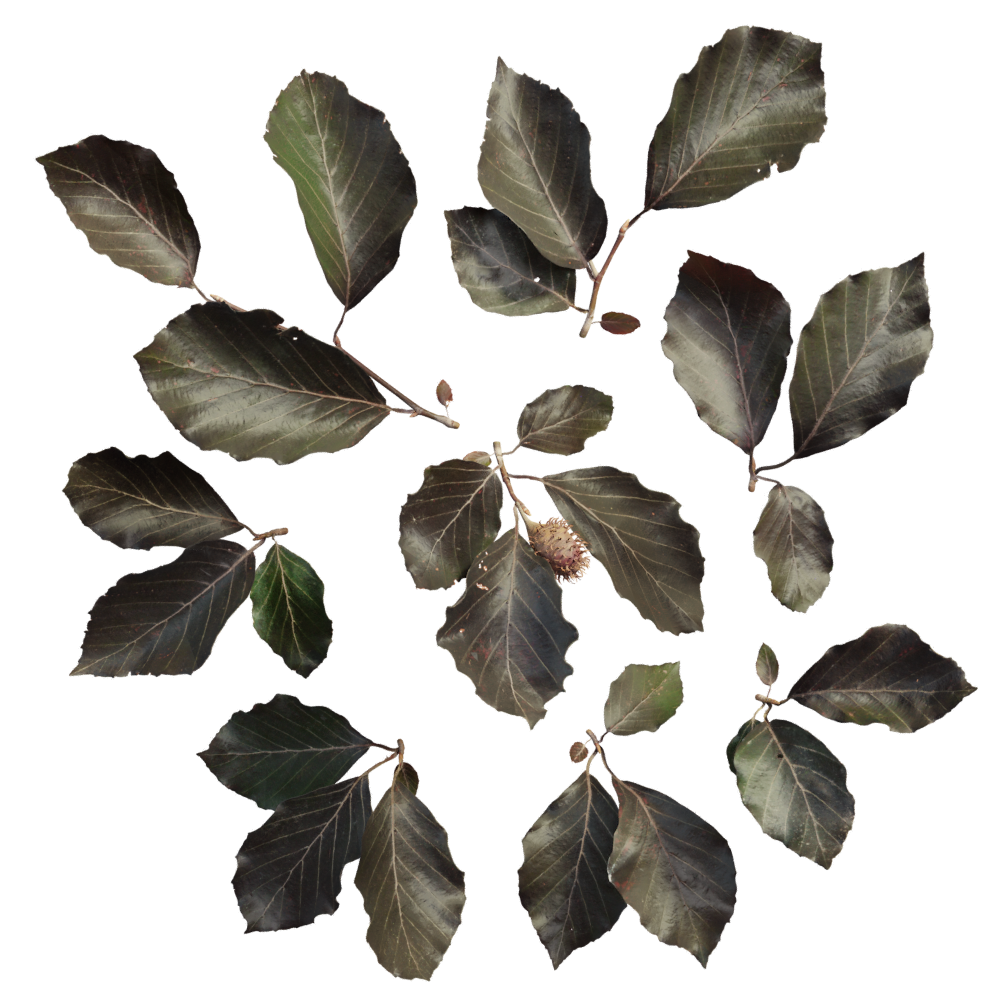Purple beech
Purple beech
Fagaceae / Fagus sylvatica ‘Purpurea’ – purple beech
Most trees are green, but some also have purple red variants. Examples are plum, maple, beech and the very popular red Japanese maple. Most of these genetic variations are quite rare in nature, but people love rare things and so we started propagating these trees. A single purple beech tree that was found in Germany over 300 years ago is believed to be the ancestor of the majority of trees now planted in parks and gardens. Purple beeches are meant to steel the show. They are planted as solitary trees in big parks or stately gardens. Free to grow into their impressive shape and size.

Purple trees
This pigment absorbs most of the visible light spectrum and stores the energy for later use. It’s very efficient in the blue and red wavebands, but not so much for green. It still absorbs most of the green light, but maybe a third of it scattered back to our eyes, and that’s the green color we see.
There’s a theory that the inefficiency may be because there’s just too much light for a leaf to handle, so it might be a protective measure. That may be true, but it may also just be a coincidence.
Then there are caretenoids, another type of pigments that helps chloroplasts absorb light. This time, it prefers the green band, and instead reflects yellow, orange and red. The green pigment is much stronger, but when it breaks down in autumn, the caretenoids stay along a bit longer, and this causes yellow fall colors.
The timing of anthocyanin production gave rise to a theory that it may be a type of sunscreen. Anothcyanins not only absorb green light, but very importantly also harmful UV light. It is also theorized that the earth was once covered mostly by purple plants because there was much more harmful radiation back then.
So anthocyanins are good at absorbing green light, together with chlorophyll this doesn’t leave much light left to reflect. Bits of violet at one end of the spectrum, and red at the other end, add up to a dark purple color. The green color absorbed by anthocyanin doesn’t help with photosynthesis, so red leaves are slightly less efficient than green ones, but for trees in full sun that doesn’t make much difference.
These trees may look uniformly purple from a distance, but when you get closer there is a lot of green in there. They still need to photosynthesize. Upon closer inspection, you can also find extra support for the sunscreen theory in the variation of leaf colors. Leaves are dark purple at the extremes where they are exposed to the light, but slightly further into the crown the leaves are much greener. You’ll see this in purple beech and red Japanese maples.